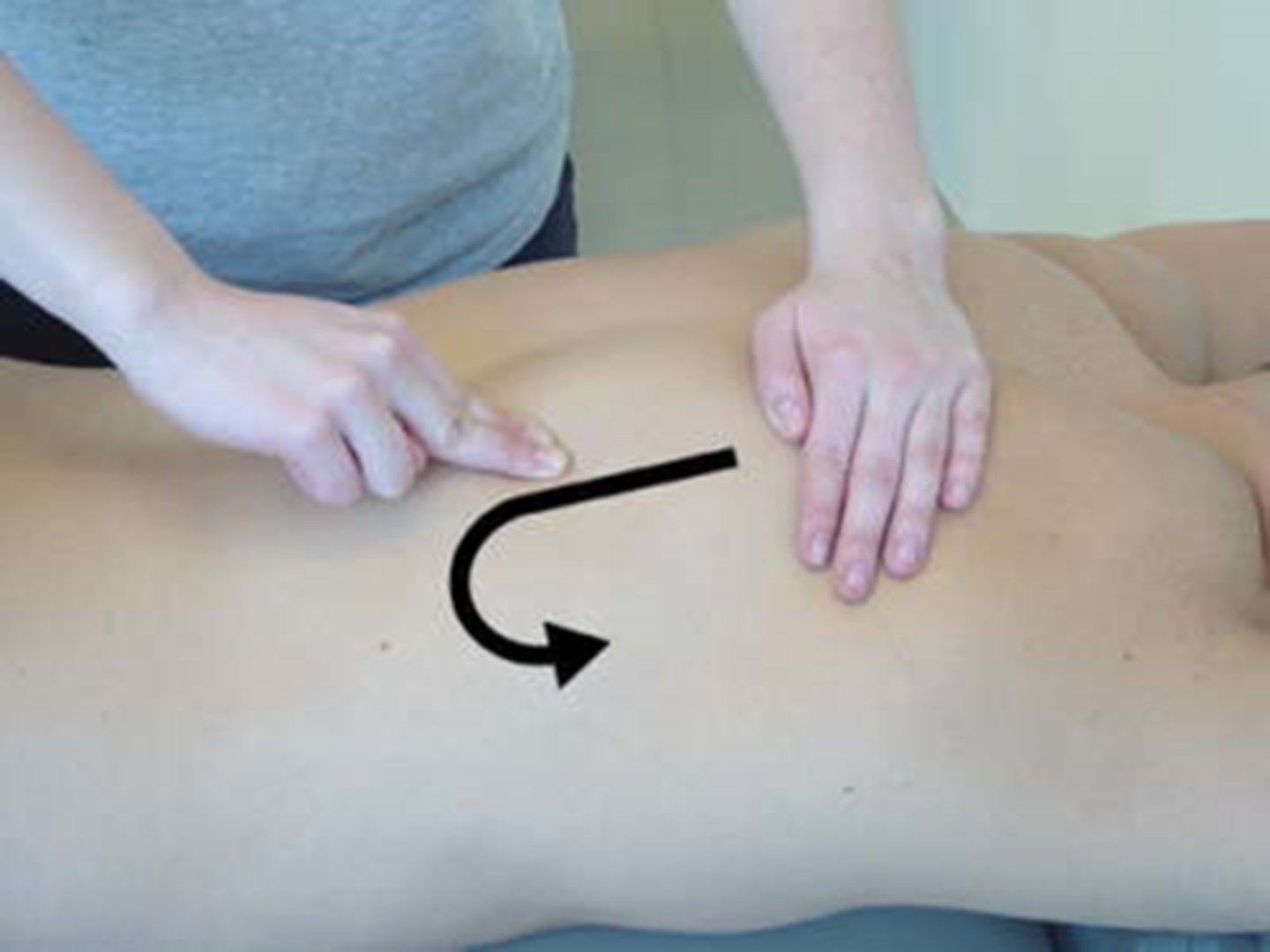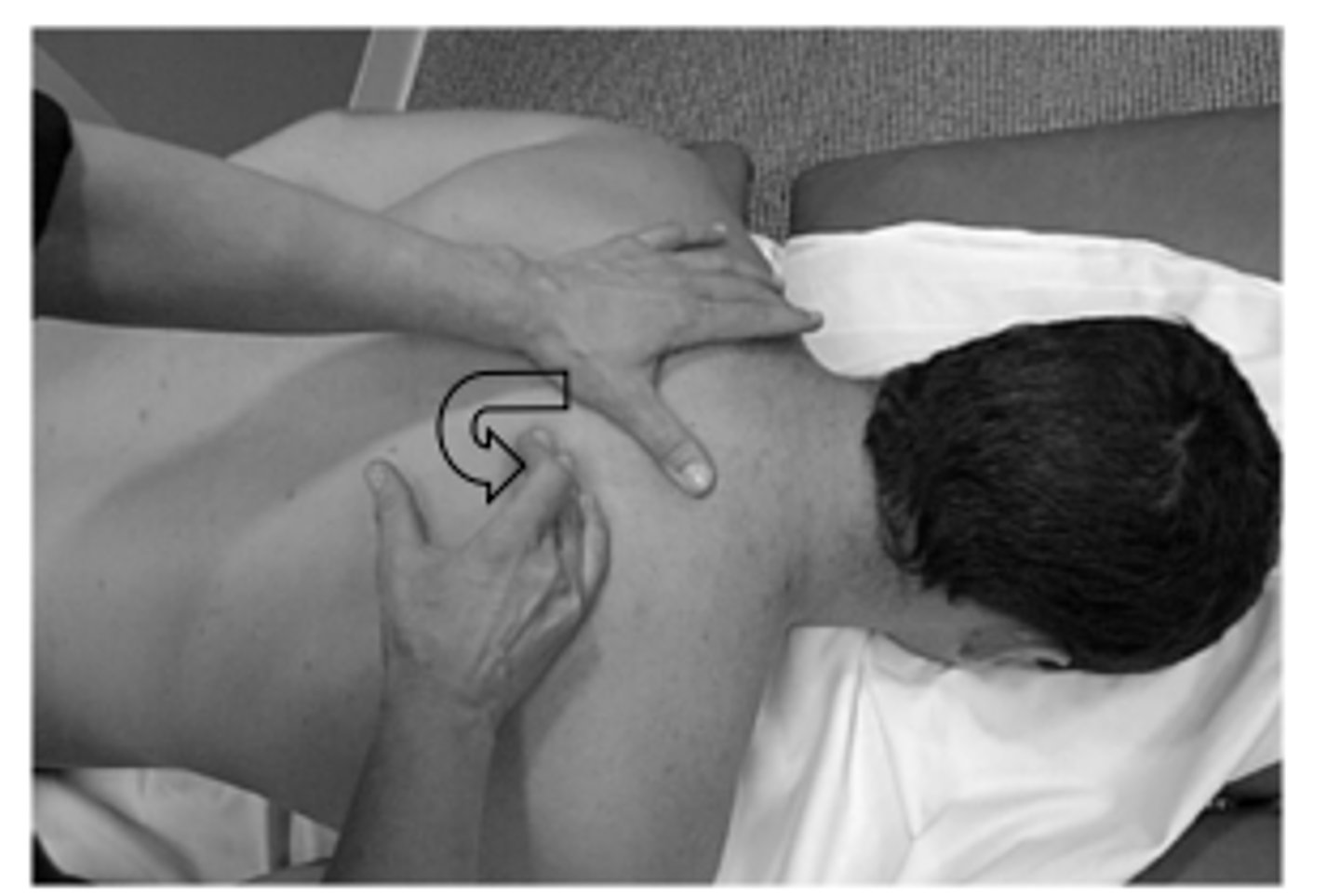Massage Study Guide
1/25
There's no tags or description
Looks like no tags are added yet.
Name | Mastery | Learn | Test | Matching | Spaced |
|---|
No study sessions yet.
26 Terms
medical, relaxation/stress, pampering, and others
what are the reasons people seek massages?
massage CPT code
includes effleurage, petrissage, and/or tapotement
- generally for relaxation and circulation
manual therapy CPT code
mobilizations/manipulations, manual lymphatic drainage, and manual traction
- generally for enhancing function and reducing discomfort
immobilization
effects of ______ and trauma on CT and muscle:
- permanent loss of GAGs and H2O
- collagen synthesis degradation
- irregular laying down of collagen and cross links
- ligaments, tendons, and joint capsules weaken
- altered sensory input
mechanical effects
- increased skin temp --> increased sweating --> decreased resistance to electrical current
- pressure toughens and softens skin
- removes dead skin cells
- stretches and breaks down fibrous tissue
physiological effects
- increased skin temp
- increased skin and muscle BF
- increased flow of nutrients and removal of wastes
- stimulation/inhibition of healing process (depends on when performed)
- increased PSNS activity
- increased relaxation hormones
- decreased stress hormones
neurological effects
- decreased NM excitability
- decreased pain via removal of edema/wastes and sensory stimulation
- decreased muscle spasm or tension
psychological effects
increases relaxation
decreases anxiety
releases endorphins in brain
fibroblastic stage
in what stages of healing is massage/manual therapy most beneficial?
considerations for massage
patient's age, gender, beliefs, and preferences
PMHx/medications
Prior STM- purpose/response
allergies
precautions/CIs
evidence
adverse effects
post massage soreness and malaise
ecchymosis
nerve damage
rhabdomyolysis
cervical headache/vertigo
effleurage
Light, continuous-stroking massage movement applied with fingers and palms in a slow and rhythmic manner.
- intent: relaxation or encourage BF and stimulate tissues
petrissage
Kneading movement performed by lifting, squeezing, and pressing the tissue with a light, firm pressure.
- intent: free adhesions by stretching and separating muscle fibers, fascia, and scar tissue
tapotement
Also known as percussion; movements consisting of short, quick tapping, slapping, and hacking movements.
- intent: promote relaxation and desensitization of irritated nerve endings
cross friction
Firm pressure applied across the fibers of the muscles and tendons
- intent: mobilize tissues and separate adhesions that restrict movement and cause pain
trigger point release
designed to elongate the muscle fascia and decrease muscle tension
- find a tender spot and place firm pressure over area until tissue starts to release/soften (2-5 min)
myofascial release
intent: obtain relaxation and elongation of tense and/or adhered tissues
- arm pull, leg pull, etc.
edema massage
begin proximal to edematous area
long slow strokes towards the torso
move starting point slightly distal every 4th/5th stroke
once distal to edema, then move proximally to milk the fluid back to the heart
therapeutic massage order
effleurage
petrissage/tapotement/cross friction/TP release/MF release
effleurage
medium
used to decrease friction between patient's skin and clinician's hands
- use more when on hairy areas
friction and petrissage
when would you possibly not want any medium or little amounts?
therapist positioning
avoid hyperextension/hyperflexion of any joints
obtain and maintain good posture and neutral spine
distribute weight evenly on both feet
be able to fit hands to the contour of area being treated
good positioning allows correct technique
professional considerations
respect privacy and patient sensitivity
ask for consent
continuous communication
professional appearance
personal hygiene
avoid inappropriate touching and unnecessary exposure
avoid interruptions
wash hands prior to and after treatment
jewelry should be off or minimal
nails need to be short
contact precautions if appropriate
documentation
client position
contraindications/precautions reviewed
medium used (allergies denied)
areas of massage
strokes/techniques provided
intensity of pressure provided
duration
intensity
tissue response
patient response
j stroke

c stroke
